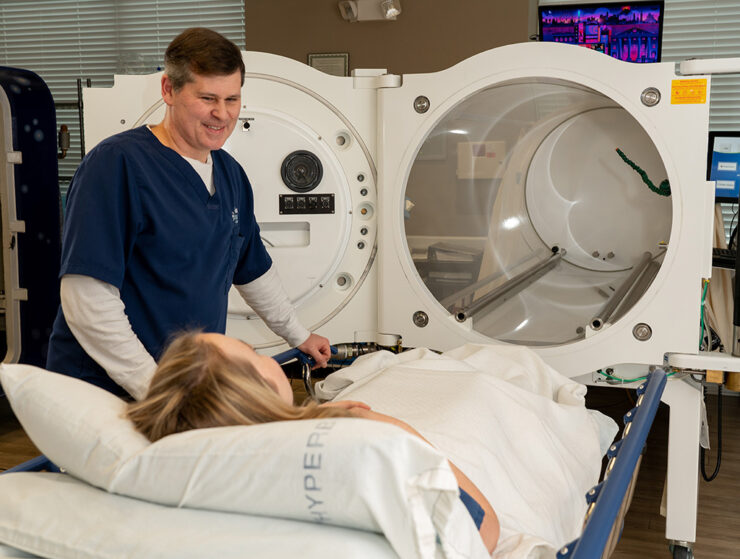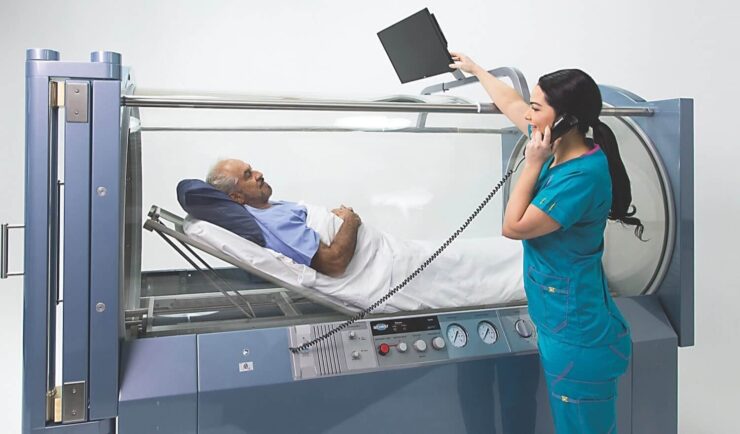Hyperbaric Oxygen Therapy involves breathing pure oxygen in a pressurized room or chamber. It increases oxygen absorption in the body, aiding in healing and recovery.
It works by increasing oxygen concentration in the blood, which can accelerate healing processes. It’s particularly beneficial for tissues damaged due to lack of oxygen.
For athletes, this means quicker recovery from injuries and potentially enhanced performance due to better oxygenation of tissues.
The great solution is that teams can benefit from using a multiplace hyperbaric oxygen chamber, which will provide more athletes with the treatment at the same time. You can learn more about this if you check out oxyhelp.com.
In this article, we will provide more details about the costs and other details related to this type of therapy.
1. What is the Price?

The cost varies depending on location, facility type, and treatment length. Sessions can range from $100 to several hundred dollars.
Several factors affect the pricing, including the type of chamber used (soft vs. hard shell), the duration of each session, and the total number of sessions required.
The pricing of Hyperbaric Oxygen Therapy (HBOT) can vary considerably based on the type of facility, whether it’s a hospital, a private clinic, or a sports rehabilitation center.
Athletes should thoroughly research and compare the costs and services provided by different facilities to identify the most suitable option for their needs and budget.
Many clinics offer special package deals designed for athletes, which can reduce the cost per HBOT session. These packages typically range from $1,000 to $5,000, depending on the number of sessions included. Opting for such packages can be a more budget-friendly option for athletes in need of multiple HBOT treatments.
When it comes to those who are planning to use HBOT regularly or over a long period, investing in a personal hyperbaric chamber might be an ideal choice. The price of these portable chambers varies greatly, starting from around $5,000 for a basic unit to over $100,000 for more sophisticated models. While owning a chamber provides the ease of treatment at home, it does involve a considerable initial outlay.
2. Insurance Coverage and HBOT
Some insurers might cover HBOT under certain conditions or may require a doctor’s prescription and evidence of medical necessity. It’s crucial for athletes to engage in detailed discussions with their insurance companies and healthcare providers to explore all possible avenues for coverage.
Moreover, athletes have the option to explore healthcare credit services that specialize in providing financing for medical treatments, HBOT included. These credit services present a feasible alternative for managing the cost of therapy.
However, athletes should be diligent in understanding the specific terms and conditions, such as interest rates and repayment plans, associated with these credit services before committing to them.
However, if an athlete has a medical condition that is approved for HBOT treatment, there might be a possibility of partial coverage. Again, thorough discussion with insurance providers and medical consultants is essential to understand the full scope of financial options available.
3. How to Choose the Right Provider?

There are two primary types of facilities offering HBOT: hospital-based programs and standalone clinics.
- Hospital-based programs are often part of a larger medical center and may provide a more comprehensive range of services, including emergency care and a multi-disciplinary team approach. These facilities are typically better equipped to handle more severe medical conditions.
- Standalone clinics, on the other hand, may offer more flexibility in scheduling and a more personalized approach, which can be appealing to athletes with specific performance or recovery goals.
Athletes should look for facilities where the staff, including physicians and technicians, are properly certified and trained in hyperbaric medicine.
Impact on Expenses
Hospital-based HBOT is often more expensive due to the comprehensive medical services they offer and their ability to treat more severe medical conditions. These facilities might charge higher rates due to the additional resources and medical staff available.
On the other hand, standalone clinics can provide more flexible pricing structures, including session packages or discounts for repeated visits, which can be more cost-effective for athletes requiring multiple sessions.
Providers with extensive experience or specialization in sports medicine and athletic injuries may charge a premium for their services. Their expertise in handling sports-related conditions and treatments to individual athlete needs can add value but also increase costs.
However, for athletes looking for targeted recovery or performance enhancement, investing in a provider with specific expertise in sports HBOT might be worthwhile.
4. Benefits Can Justify the Price

One of the main benefits of HBOT for athletes is its ability to accelerate the healing process of injuries. The high levels of oxygen delivered to the body’s tissues under pressure can significantly reduce recovery time.
This is crucial for athletes who need to return to training and competition as quickly as possible. Faster healing not only means a quicker return to the sport but also reduces the risk of re-injury by ensuring a more complete and robust recovery.
Improved Performance and Endurance
The increased oxygenation of tissues improves muscle stamina and reduces fatigue. This allows athletes to train harder and longer, pushing their limits safely.
The therapy also helps in better lactic acid clearance, reducing muscle soreness and enabling more efficient training sessions.
Reduction in Inflammation

Athletes often struggle with inflammation and pain due to the rigorous nature of their training and competition schedules. HBOT has anti-inflammatory properties, which can be extremely beneficial in managing chronic pain and inflammation.
Regular sessions can help athletes maintain a more consistent training regime by managing pain more effectively.
Long-Term Health Benefits
Apart from the immediate improvements in athletic performance, HBOT also contributes to long-lasting health advantages. This includes bolstering the immune system, more effective wound healing, and possibly offering sustained neuroprotective benefits.
For athletes, preserving overall health is essential, and incorporating HBOT into a comprehensive health and wellness strategy can be instrumental in achieving this goal.
The Bottom Line
Considering these benefits, the cost of HBOT can be justified, especially for professional athletes or those aspiring to reach high levels of performance.
The investment in HBOT should be viewed in the context of its potential to not only enhance performance and speed up recovery but also to extend an athlete’s career by maintaining optimal health and reducing the risk of chronic injuries.
When these factors are weighed against the cost of therapy, HBOT emerges as a valuable tool that will help the athlete to stay in the right shape, avoid getting injury-prone, and recover much faster from various problems.

